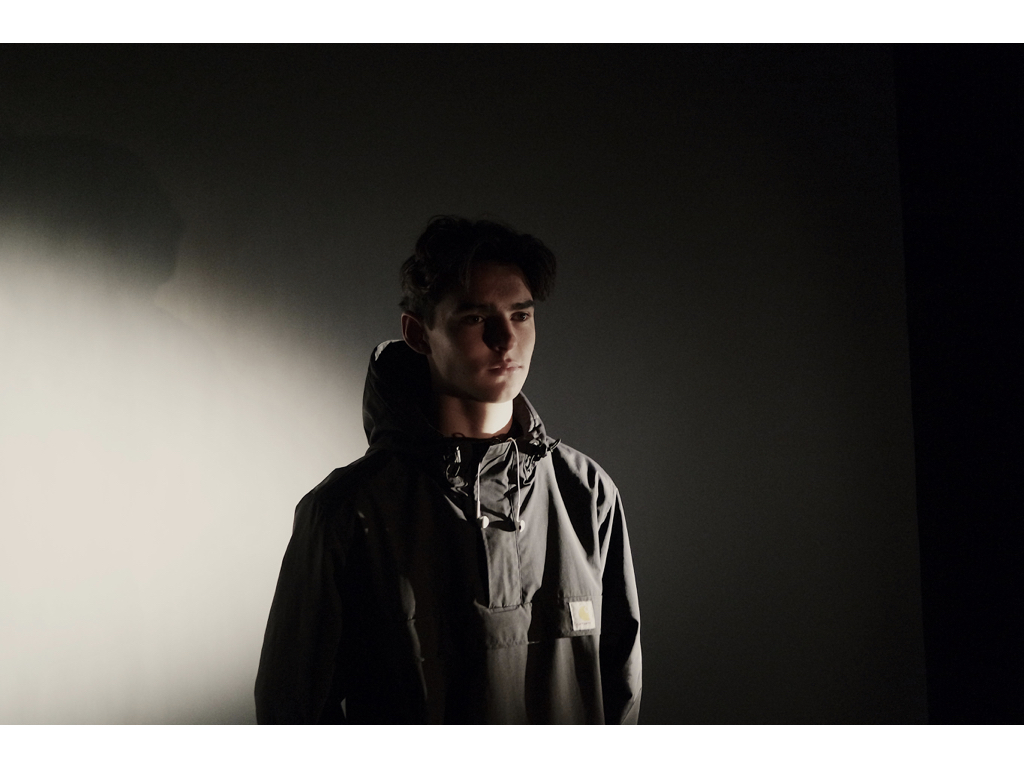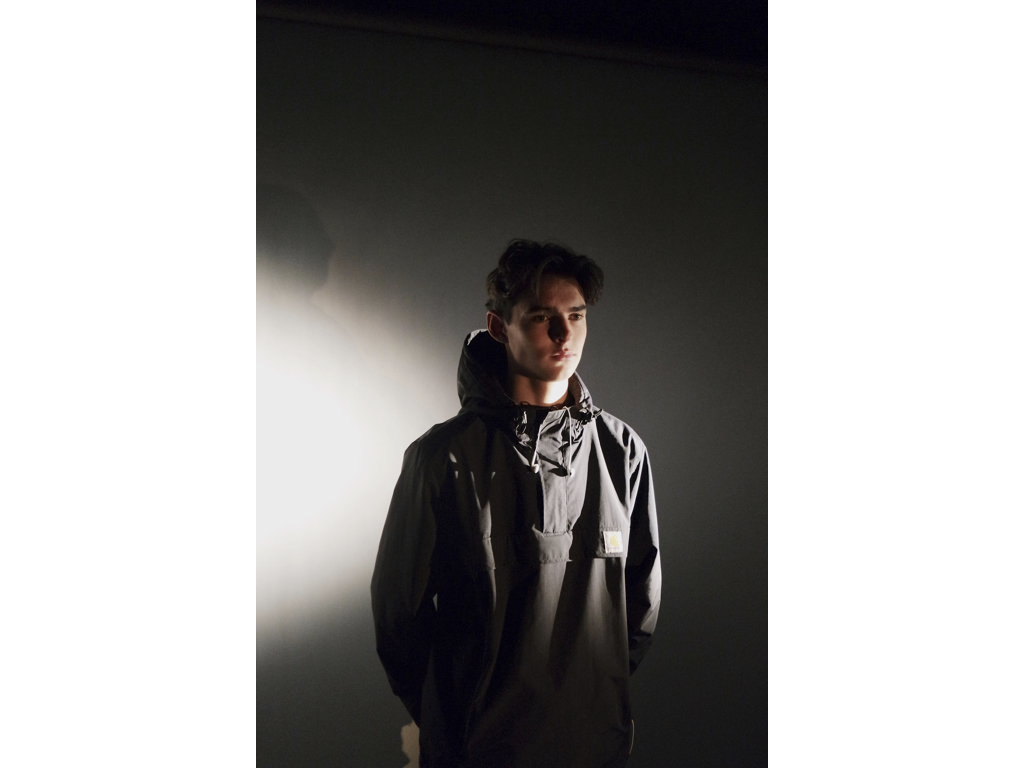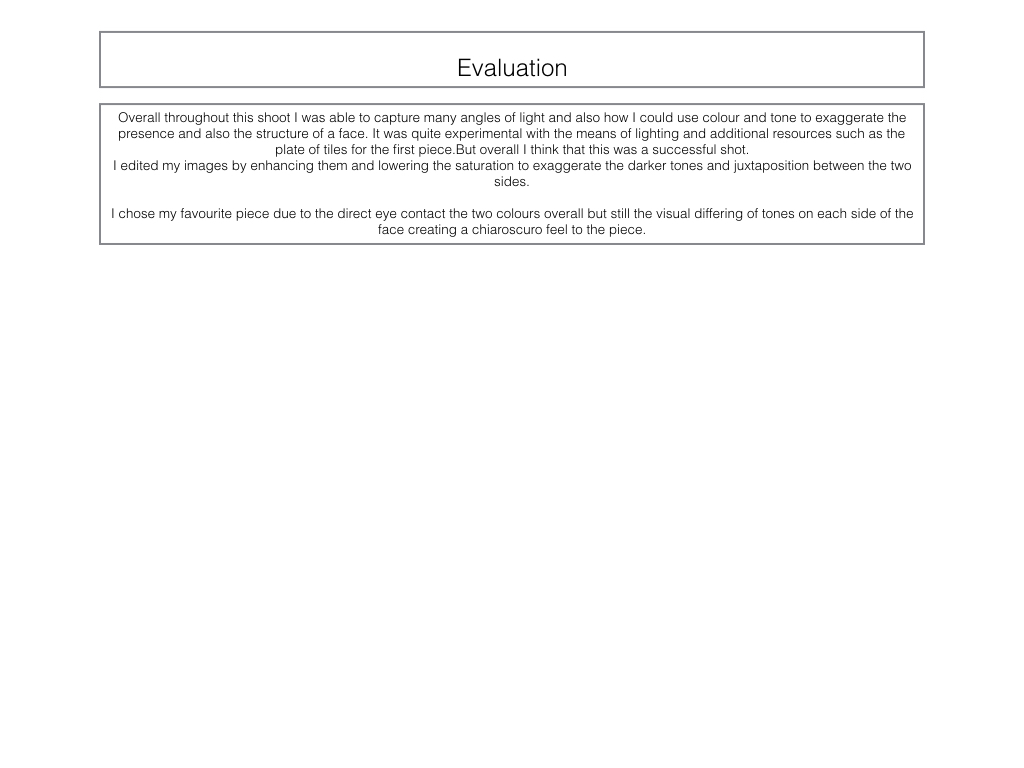For my creative portraits, I am planning on using UV paint with handprints for identity and I will also look at photoshopping the faces off subjects to show lack of identity.








For my creative portraits, I am planning on using UV paint with handprints for identity and I will also look at photoshopping the faces off subjects to show lack of identity.








Tableau photograhy comes from Tableau vivant, it is French for ‘living picture’, is a style of artistic presentation, often shortened to simply tableau. It most often describes a group of suitably costumed actors, carefully posed.it is seen to be somewhat romantic and symbolic.It is meant to be short and dramatic.It is all about his the environment reprints a whotle sotry and as to how everything is put in a. place for a reason and everything has a symbolic purpose altogether.it is highly creative and can be used to present a scenario of more surrealistic ideas or even in order to create a historically famous artwork,into a Modern day photographic presents the Modern struggles presented throughout the work. The key characteristics of the contemporary photographic tableau according to Chevrier are, firstly:
“They are designed and produced for the wall. summoning a confrontational experience on the part of the spectator that sharply contrasts with the habitual processes of appropriation and projection whereby photographic images are normally received and “consumed”


For creative photography I wanted to focus more upon interesting concepts rather than artists themselves. I want to portray many aspects of illusions that can be achieved through composition and further editing.Lots of ideas that I have seen that inspire me,are images surrounding water,and the development of color and the dripping of lighting and also reflections within the water. This can be seen within the following:The second Idea I have would be surrounding a movement of slow shutter speed,this allows a sense of movement that is create and allows a sense of duplication of faces which is effective. There is also an additional sense of illusion within the work that allows further experimentation within reelections and editing to the images themselves.furthermore the third creative idea I have is using mirrors,in order to show repetition within the face and also to show illusions of lack of body or interesting angles to capture a hand holing a mirror which clearly shows a face.these were all inspire by my artists seen below.
Aaron Face is a photographer who uses tableau photography very much in his work.His images resume surrealistic and used in order to show a more imaginative world and more expression shown continually throughout. is a self taught artists,who specializes his work by using Photoshop and using many levels in order to create an almost abstract feel. He said he enjoys using Photoshop in order to act much like a paint brush,this creates a free flowing feel to his images.
lots of the images from below are from an exhibition called ‘visions of whimsy’ This is used to demonstrate a world in which there standards and expectation revolved and also highly creative and surreal imagination and also highly creative altogether
. 
I chose this image because of the light and how it enhances all the elements of the photo itself, furthermore it also presents ways in which magic can be repressed in a more realistic circumstance and also masculine standards presented and who he is and his contextual beliefs too.
I think this artists will help in benefiting my work because it has many abilities of imagination creative aspects too enhance people and how their conceptual thoughts are shown throughout themes like their personality.The attachment within this identity is less to do with a lack of identity but more to be finding their identity in a surrealistic way in how represents them as a whole.I want to continue to show they are diverse but within a more surrealistic way and perhaps less stereotypical and sad.
she is a Spanish photographer and a well known artists best known for her individuality within exhibited portraiture.she is the youngest of three and founder love and passion for photography at just the age 13,this was due to the fashion photography show Americas next top model, this was due to her being intrigued within makeup and styling and ways inward which lighting had such a large impact .she further specializes within close up portraits,she was exhibited at just the young age of 15 and this is what started off her very creative sense of style.all her work varies very much, making no piece quite exactly other,but she does always have a strong continuation of a sense of abstract and creativity within makeup,composition and the coloring used thought out.throughout her work you can Clearly see a more gruesome and perhaps more vulnerable she to herself throughout her photography. Although these pieces are not my favorite I can see how a sense of hardship has inspired her throughout all of her work.I have chosen work from three of her exhibitions in which I feel I could further use these creative ideas and as to what was inspired by them;
I like this image due t the interposing sense of medium on her face,which creates a sense and molding depth of field and a sense of interest and substance to the piece itself,furthermore the color gradually darkening successfully compliments the background and creates a mysterious and possibly sinister tone to the piece itself.the red under the eyes creates a color contrasting also draws a directness of attention also emphasized with the direction as to where her eyes face, the string itself allows the conceptual concept that she herself is stuck and show the artists cretaive ideas to symbolize a more dark meaningful representation to people.

In addition I was also inspired by this piece, due to the juxtaposing sense of textures and create a scorched sense of movement within the case itself, it creates an interesting tone of effect too as it is see throughout so from a way of exaggerating colour. This look was a inspired by her conceptual concept of beauty standards and was in order to show a sense of everyday clown effect, and how it is a hunoures matter in which people worry about their representation within society today.i think her expression is quite powerful and it furthers the kind of the almost ragged sharp plastic covering hermit shows strength and I find this intriguing within her work.

I chose this image lastly due to it being unlike any of her previously seen workout shows a sense of natural meaty within her work but while also having really deep tones that create a larger sense of persona to the piece itself. the composition of a very strong close up on hr hand is changed within how her hand shows a sense of delicacy but also obstruction from within the rest of her face,again creating an interposing composition to the piece.
From her work ideas that I will use: I want to show a large divertsity of color ideas and interesting concepts that she includes in her work, such as power and also a sense of sinister toning.inspiration for shoots: I would like to do a shoot using light and string in order to create an exaggerate persona and connote a struggle while also showing an interposing conceptual concept and visual aspects. ,furthermore I would to focus on direct close ups on portraiture aspects, and also use this to enhance a tone and persona to the image itself.
This work could be further linked to the idea of loss of unity throughout the struggle and hard pressure that are seen to be under, such as the rope wrapping around the face preeners the idea of struggle and also thatch is contraindicated,this shows how they feel lost and toed up within their emotions not known how they themselves are and almost use the rope as a metaphorical device that they are and unable to continue.
Task – Produce 100-200 images showing your understanding and control of studio lighting.
Models/props – White Backdrop for bright images, Black Backdrop for darker images, spotlight, reflectors, filters, models.
Camera settings – I intend to use an ISO value on 100 to ensure the quality is kept to a high standard and the shutter speed of about 1/125 however i will alter it to fit the lighting used at the time.
Lighting – I will be using red head lights, spotlights, natural light and flash to capture a wide range of images.
Location – School studio
Concept – To capture a range of studio photographs in the style of David Bailey whilst incorporating the style of chiaroscuro.
David Bailey was born in Leytonstone East London to Herbert Bailey, a tailor’s cutter, and his wife, Sharon, a machinist.
Bailey developed a love of natural history, and this led him into photography. Suffering from undiagnosed dyslexia, he experienced problems at school. He attended a private school, Calrk’s College in ilford, where he says they taught him less than the more basic council school. As well as dyslexia he also has the motor skill disorder dyspraxia.
In one school year, he claims he only attended 33 times. He left school on his fifteenth birthday, to become a copy boy at the Fleet Street offices of the Yorkshire post. He raced through a series of dead end jobs, before his call up for National Service in 1956, serving with the Royal Air Force in Singapore in 1957. The appropriation of his trumpet forced him to consider other creative outlets, and he bought a Rolleiflex camera.
He was demobbed in August 1958, and determined to pursue a career in photography, he bought a Canon rangefinder camera. Unable to obtain a place at the London COllage of Prinitng because of his school record, he became a second assistant to David Ollins, in Charlotte Mews. He earned £3.50 a week, and acted as studio dogsbody. He was delighted to be called to an interview with photographer John French.



I am inspired by this image due to the sheer simplicity of it, yet effectiveness it has. It has a large tonal range with strong contrast which helps to bring out certain and important elements of the photograph. There is a high contrast between the background which is completely white and the mans coat which he appears to be wearing which is all blackened. I think that a low ISO of about 100 or 200 would have been used due to the fact the image is of such high quality. The bright light upon his face has been implemented through the use of spotlights directed into the right side of his face (his left). This use of lighting has created a strong contrast on the opposing side of his face. This effect may have been deliberately used to create a sense of mystery or secrecy. The composition of this photo is effective in the way that we are drawn to look at the eyes of the model which helps the viewer to engage with the photo.
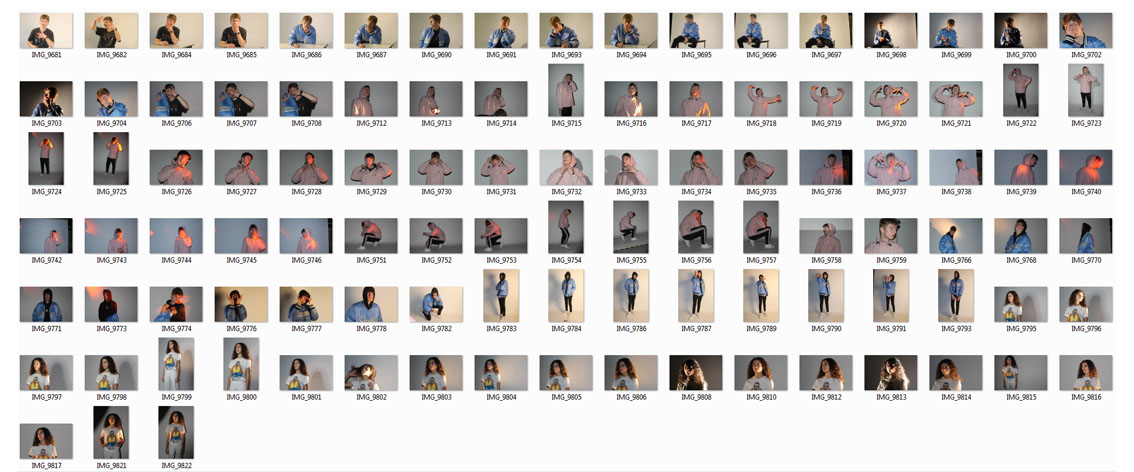
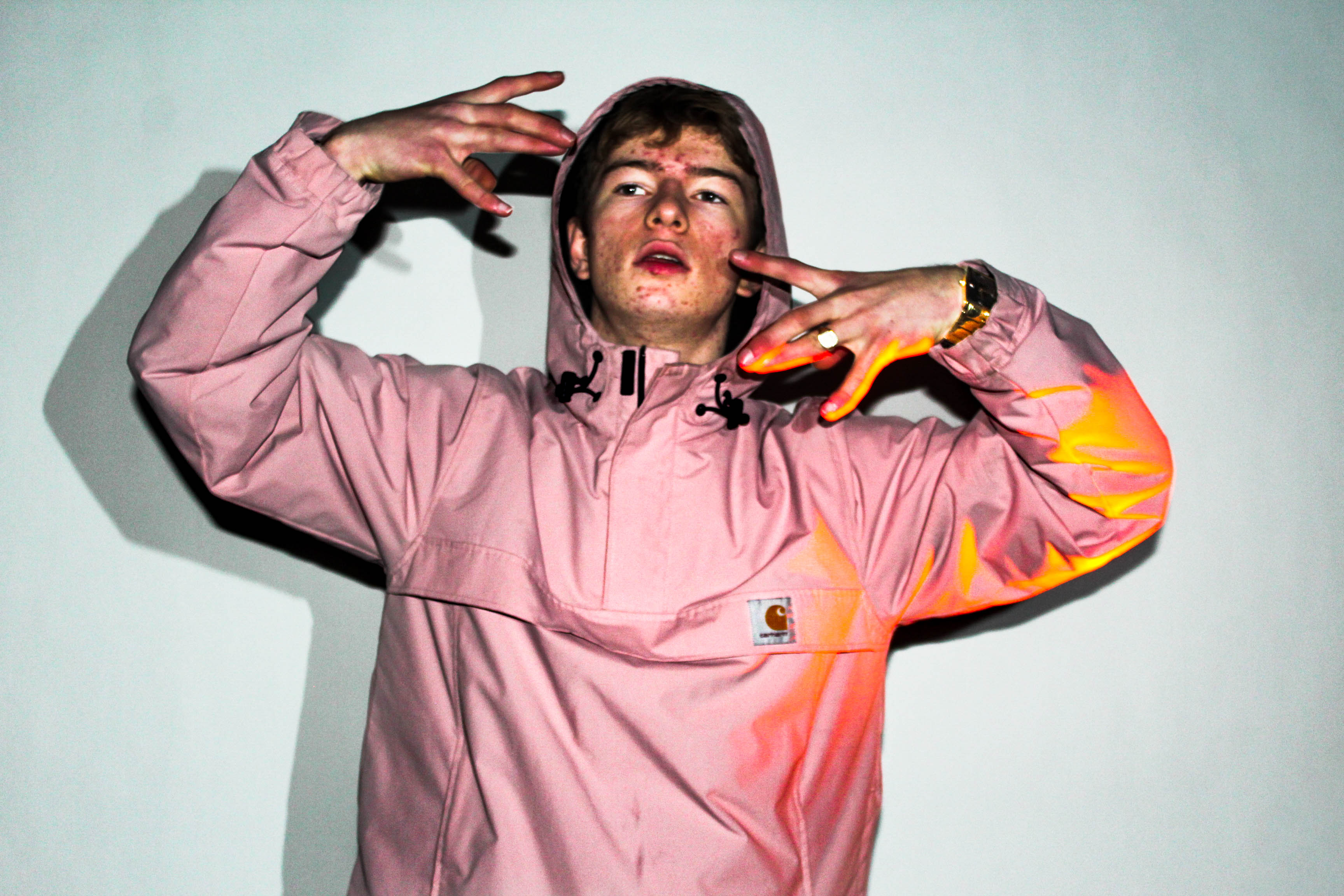
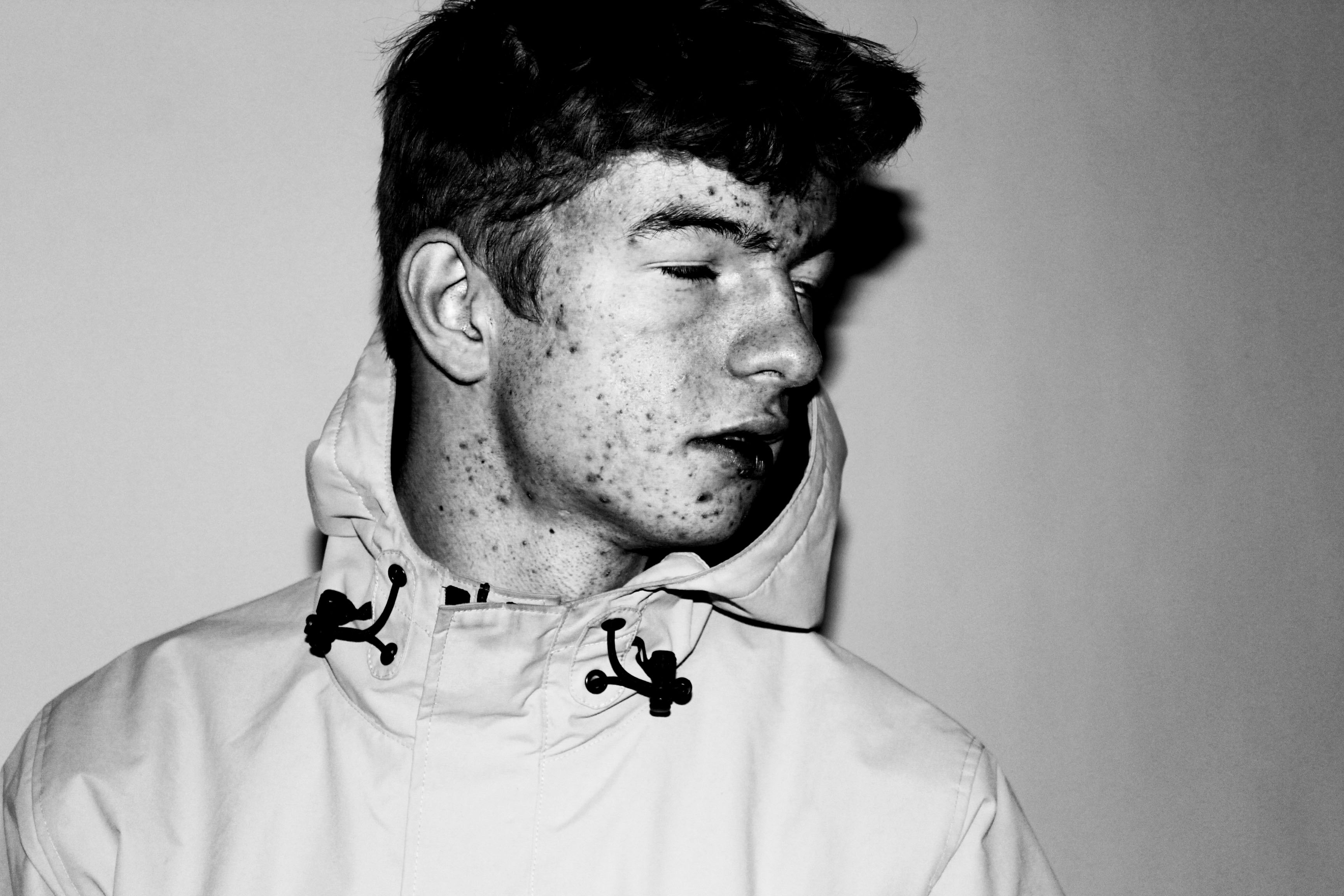

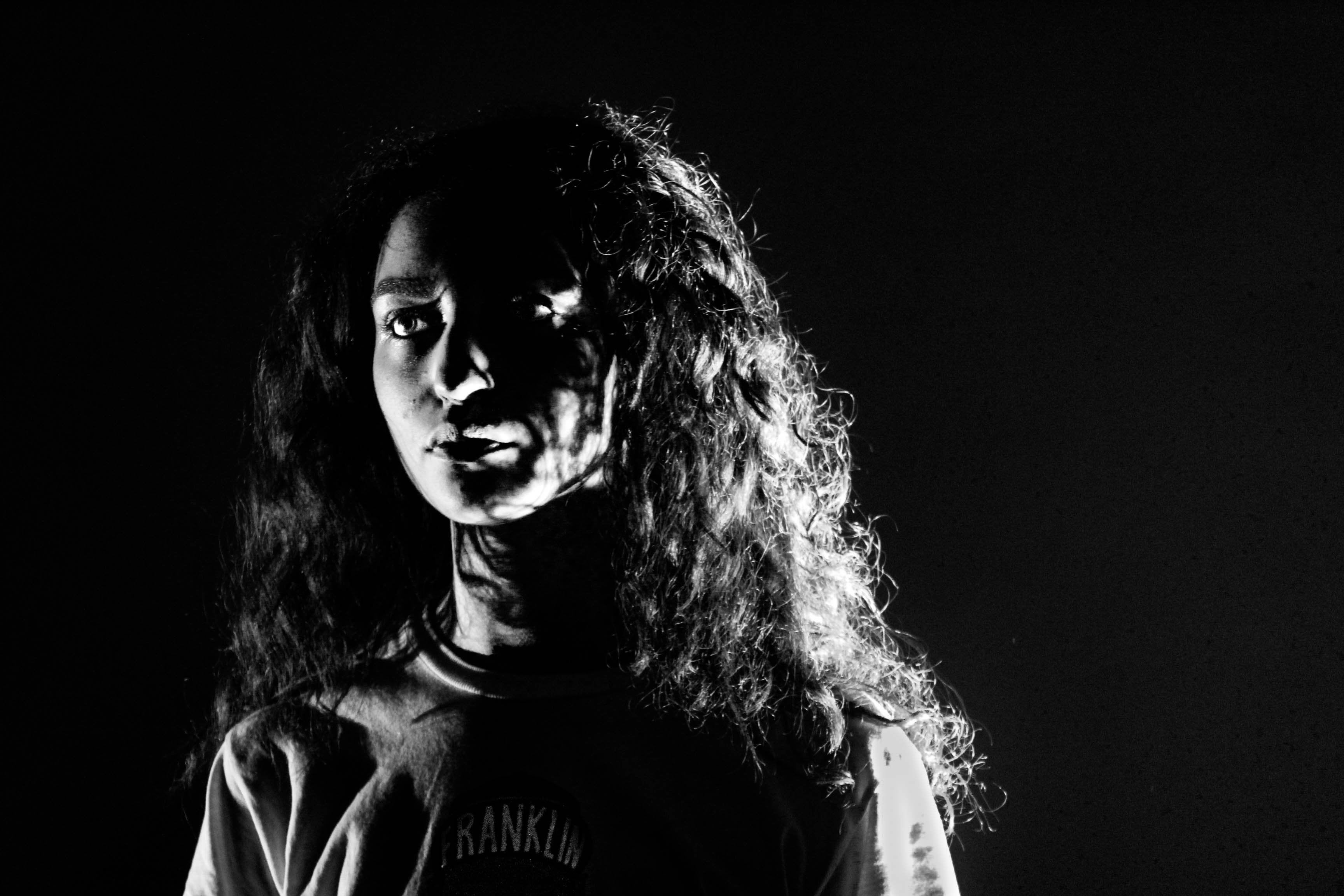



Technical: This image has been taken in a studio using studio lights to make the image as bright as possible. we can see one light shadow which helps define the model from the background. A very white light for example LED’s would have been used to give the closest possible to true white. The white Balance would have also been adjusted to make sure there were no yellow or blue tones. Despite most of the image being in white it has a high contrast due to the dark areas in the hair. This image was taken on a hight aperture which has made the whole image sharp and in focus.
Visual:

 I first created a mind map of photographers that interested me and that I thought related to the concept of identity. The manipulation of paper and the way we perceive the photograph was also important when deciding which photographers I would take inspiration from when doing my photo shoots.
I first created a mind map of photographers that interested me and that I thought related to the concept of identity. The manipulation of paper and the way we perceive the photograph was also important when deciding which photographers I would take inspiration from when doing my photo shoots.
 I tried to interpret his style by creating images by layering different sections from different cropped photos.
I tried to interpret his style by creating images by layering different sections from different cropped photos.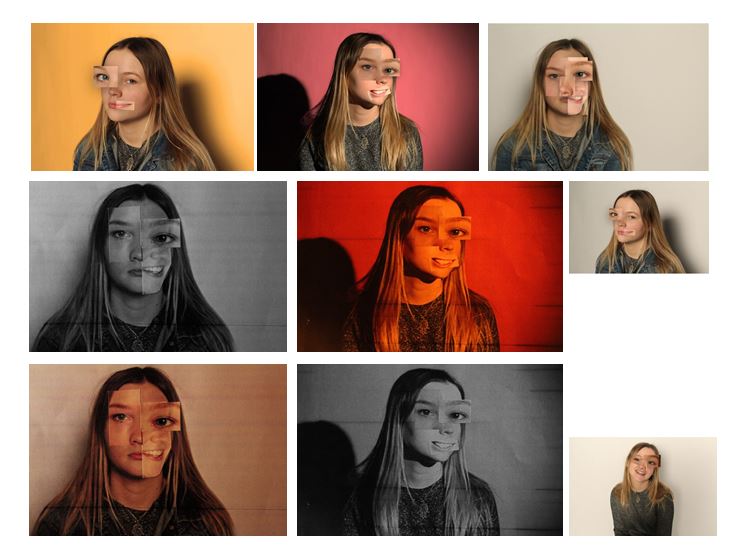 I edited some of the photographs on photo shop and some by cutting the paper and physically sticking on the different angles of the face to experiment which way worked best. I found that the better effect was when i physically stuck on paper on the printed out face as the images edited on photo shop looked too artificial, whereas the stuck on photos looked developed and well experimented.
I edited some of the photographs on photo shop and some by cutting the paper and physically sticking on the different angles of the face to experiment which way worked best. I found that the better effect was when i physically stuck on paper on the printed out face as the images edited on photo shop looked too artificial, whereas the stuck on photos looked developed and well experimented.
These are my two final selections that i have chosen to be printed and framed:
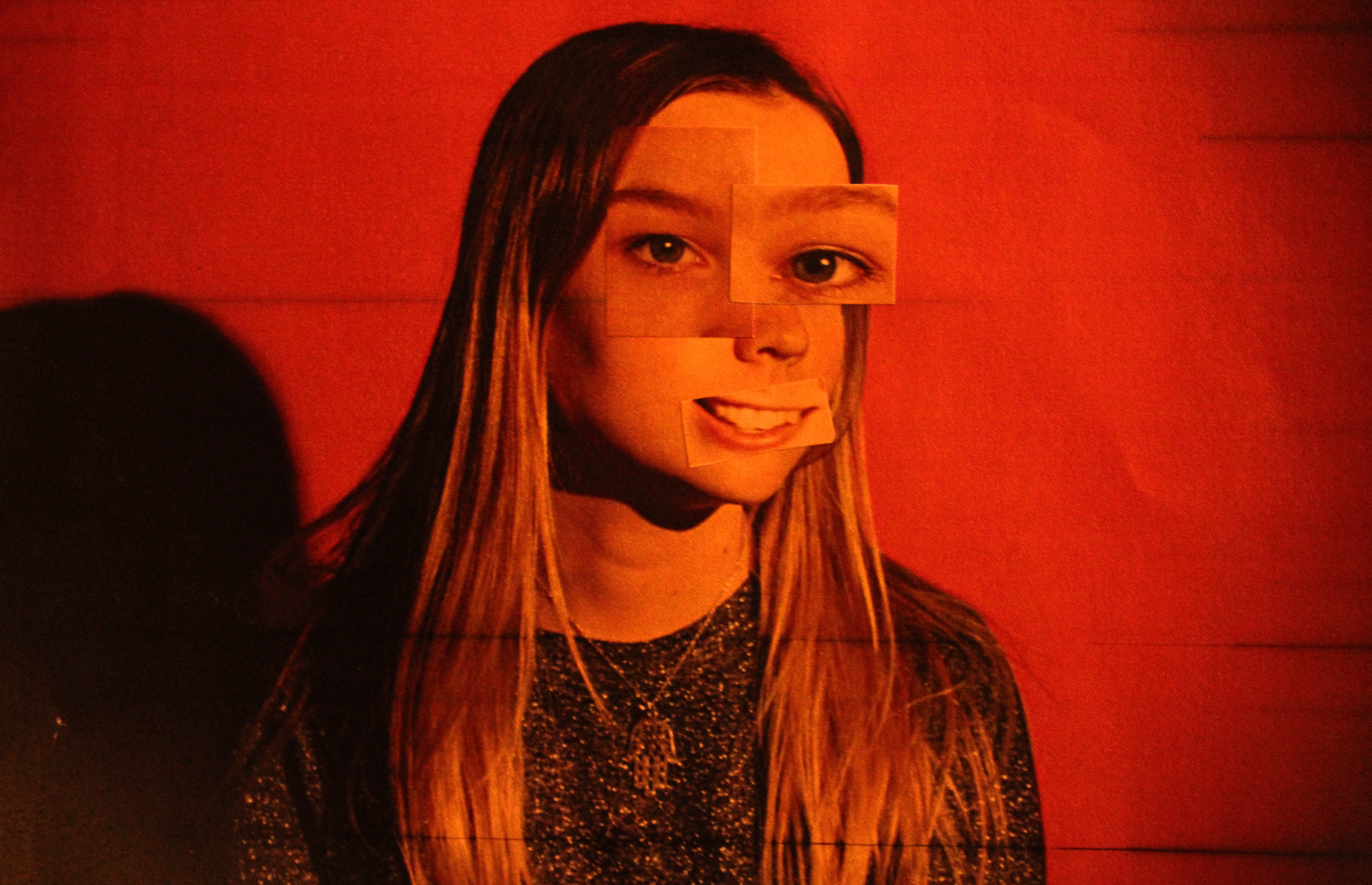

Some more examples of John Stezaker’s work:
 John Stezaker’s work may, in several respects, be part of the continuity of the collage activities that marked 20th-century art, but they stand out in particular by the way they broach the construction of meaning.
John Stezaker’s work may, in several respects, be part of the continuity of the collage activities that marked 20th-century art, but they stand out in particular by the way they broach the construction of meaning.
Some experiments: I tried to interpret John Stezakers work by editing photos onto images of my subject. I tried to select images that would make for an interesting photo and tried to connect lines in the attached photo to lines and sections on the original photos. For three of the images i edited my own photographs onto the image and the forth one i used a picture of an postcard I found online to interpret John Stezaker’s work the best i could as he used postcards in his photos, which i think is the most effective out of the four.
I tried to interpret John Stezakers work by editing photos onto images of my subject. I tried to select images that would make for an interesting photo and tried to connect lines in the attached photo to lines and sections on the original photos. For three of the images i edited my own photographs onto the image and the forth one i used a picture of an postcard I found online to interpret John Stezaker’s work the best i could as he used postcards in his photos, which i think is the most effective out of the four.
When experimenting with Brno Del Zou and John Stezaker’s work i found that my experiments did not have a clear meaning behind them and decided to explore more to find a different photographer more suited to my point of view.
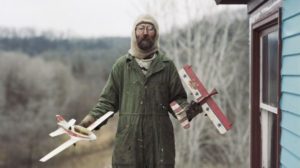
D e a d l i n e = F r i d a y 1 st D e c e m b e r ( your 3 strongest images will be sent off for printing and then we will mount / frame your work)
How to order your prints :
You must provide ample evidence of the following…
HOMEWORK = 1-3 photo-shoots (50-150 images per shoot)



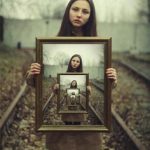
Make sure you refer to the powerpoint we have used in class to discuss a range of artists and their approaches to identity / self-portrait…
research and explore ways to present your work and create a blog post that articulates this clearly…

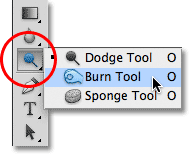
Burn = darken (check your exposure % and size of brush!)
Dodge = Lighten (check your exposure % and size of brush!)



You can explore Adobe Photoshop , Adobe Bridge and also Lightroom (extra class on Tuesday 21st LUNCHTIME)
You can explore manual editing techniques….like this

You should experiment with a range of presentation ideas.
You should exploit a range of editing apps and Instagram filters.
Remember >>> Use your own photographs <<<
Soon you should have 3-5 carefully edited responses…clearly displayed as “Personal Responses” (AO4) and these will be printed for you ready to display.
Why do we use studio lighting? We use studio lighting because it gives us more freedom to control the conditions that the subject is in. For example we can adjust the angle, brightness and color of the lights so that we can have the settings we desire to have the picture taken in. What is 3 point lighting? Three point lighting is split into three different points: Key lights, fill lights and back lights. Key lights: Usually the main and strongest light, with the most influence in the shoot, and is placed on one side of the camera so that the other has some shadow. Fill lights: The secondary light that is placed on the other side of the camera from the key light, to fill in some of the shadows using softer lighting. Back lights: This is placed behind the subject to provide some lighting from the back, with its purpose to provide definition and some highlights in the picture, which helps separate the subject from the backdrop.In this shoot I used the artificial lighting provided by the spotlights, to create a dramatic, almost black background, whilst using a red film to cast a reddish shadow onto the subjects face. I tried to position the subject's face using the rule of thirds, so that the eye was drawn to the face almost immediately, whilst blending in some of the subject's clothes into the darkness to create a smooth visually pleasing image. This was my response:
Final pictures:
I chose this image because I loved how the subject emerged from the darkness through the slow faint gradient of the red. This I found created a more dramatic effect to the overall image taken.
What I liked about this image was how not all of the subjects profile was shown, as there is a clear contrast between the light and dark side of the face. This created a more abstract effect where the body seemingly is materializing from the darkness.
I found that the clear definition between certain points of the subjects face, such as the neck and forehead allowed from a most striking and dramatic look from the individual.
What I really liked about this image was the use of the main light only being used. By doing so it created a circular spotlight illuminating only the top half of the subject's body, whilst making an imposing and strong contrasted image.
The use of the shadow in this image allows for a strong contrast created by the singular spotlight, to which the slight gradient around the edges makes the overall image more sinister.
Why Do We Use Studio Lighting?
We use studio lighting because it enables the photographer to create a controlled environment to capture the exact photograph that you want. Studio lighting allows you to completely control how hard/soft the light is, the intensity of it and the direction of which it is coming from. It is easy to adapt the studio lights to create the best shot possible by highlighting certain parts of the subjects face and reflecting light in different directions.

Three point lighting is a method used in studio photography in which uses three separate positions for light sources so that the photographer can illuminate the subject in the exact way that he/she wants to. The first light is a key light, which is usually the strongest light and sets the lighting of the scene. The second light is the fill light which helps to fill the shadows that the key light casts to prevent a distracting contrast. The last light is called a back light and is used to create separation and contour. the back light helps to illuminate the model from the back for example, the models hair being lit up.

Fill light is any source of illumination that lightens or fills in areas of shadow created by other lights. Most of the time, fill light is used to lighten the shadows created by the key light. Below is an example of which shows how fill lighting creates an effect.

What is Spill Lighting?
Spill lighting is the light that falls where it was not intended to fall. This creates a distracting effect within images which can really negatively effect your pictures. 
What is Chiaroscuro?
Chiaroscuro is a lighting technique that uses strong tonal contrasts between light and dark to model 3D forms with a dramatic effect. This technique creates a great deal of drama and mystery which i think is a great way to portray feelings and stories.

What is the burn and dodge tool? The burn and dodge tool allow you to either darken or lighten an image of your choice. This can be used to create dramatic effect within an image, and so can use it to lighten dark areas or darken parts you want to stand out the most. This is used in portraiture due to how it can be used to make certain features stand out above the rest, such as making one side of the face darker. The image below shows the effects of dodge and burn to a grey surface:I wanted to apply this to an image of mine to see the effects that could be made. These were my steps: 1) Navigate to the selection bar on the left, and pick the burn tool.
2) Select a suitable size for the brush to match the face, and go over the parts of the face I want to darken once.
3) Go back to the bar on the left and select the dodge tool instead, from there I lightened the parts of the image I wanted to have a clear contrast from the darkness.







